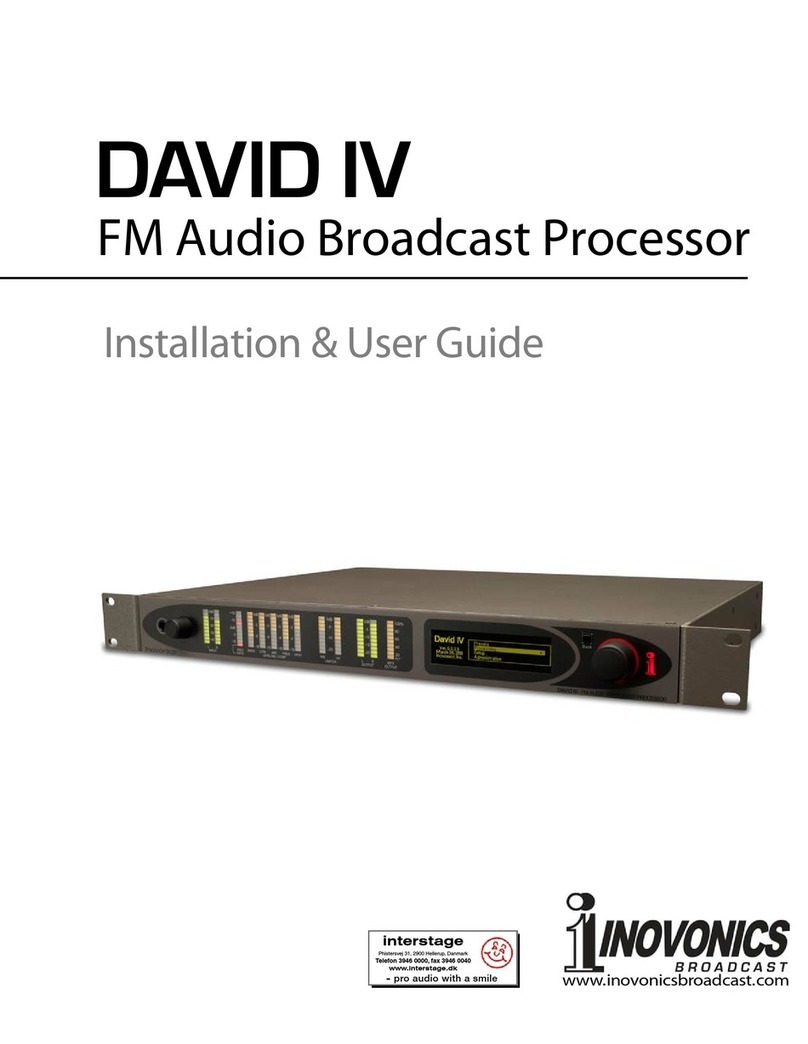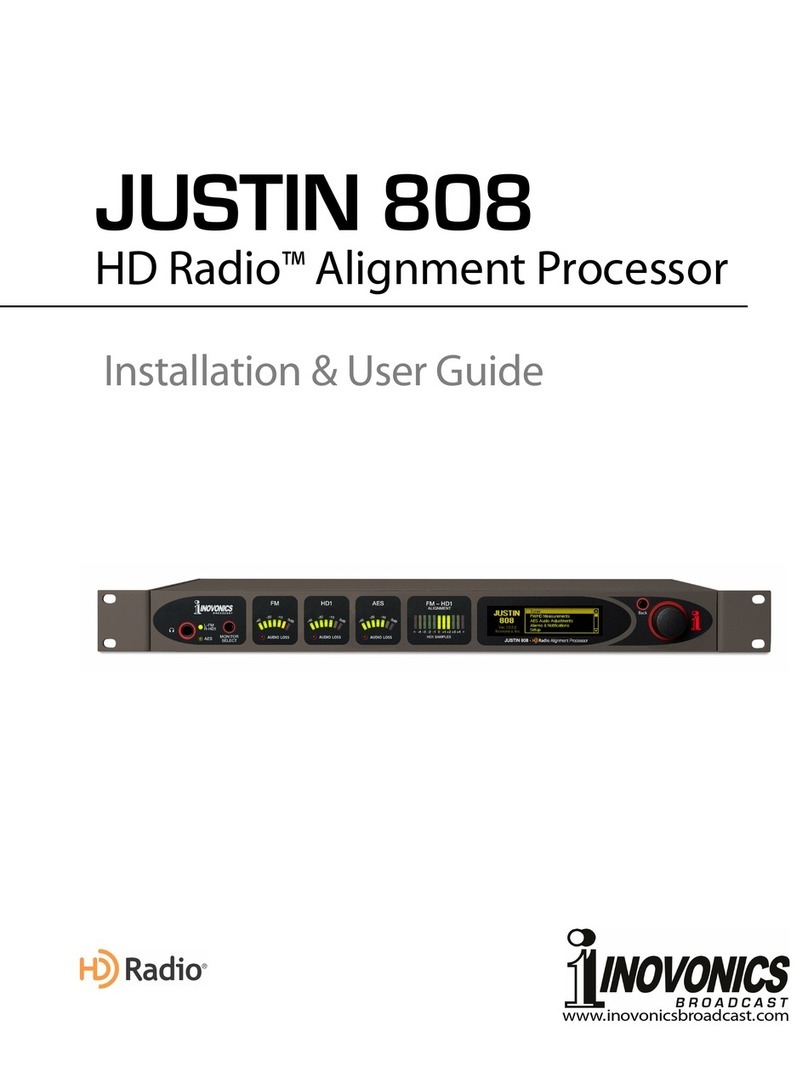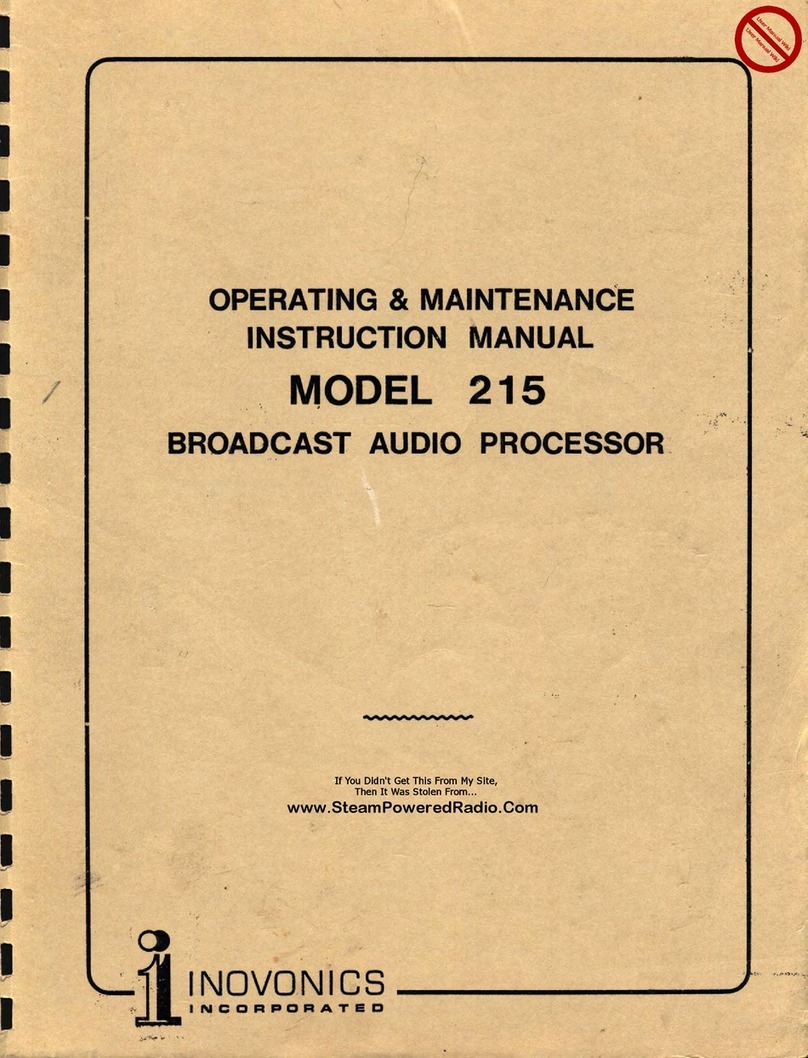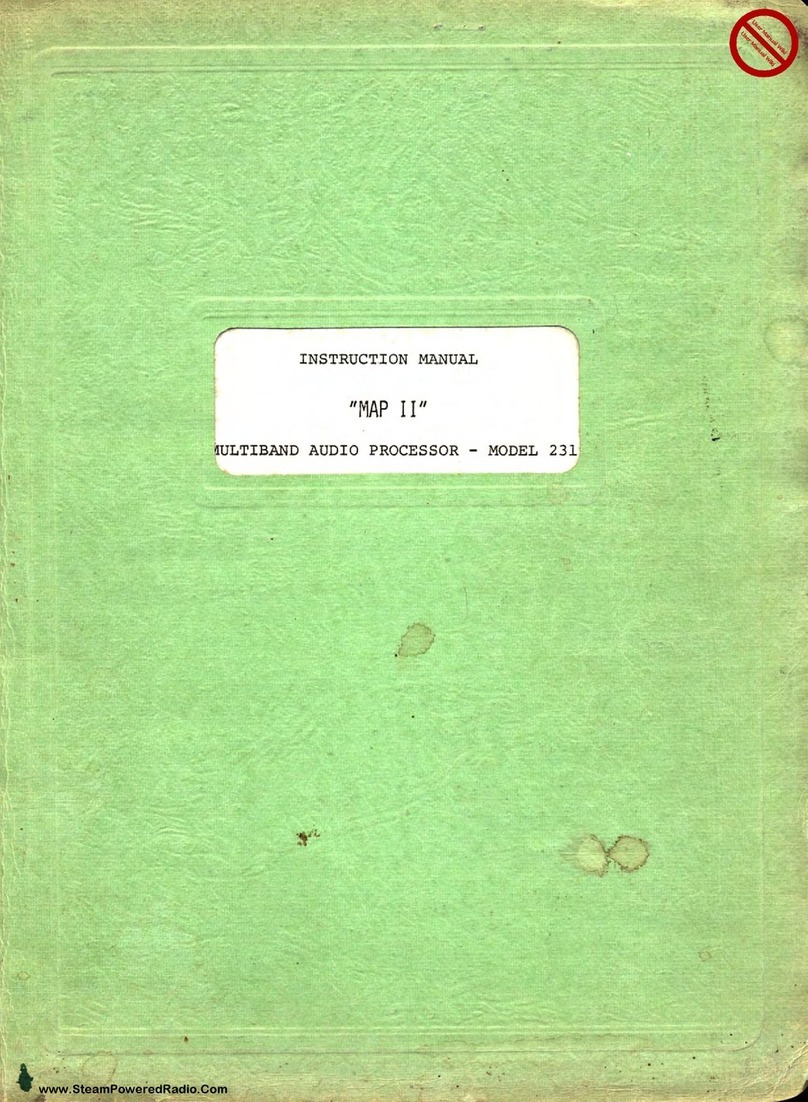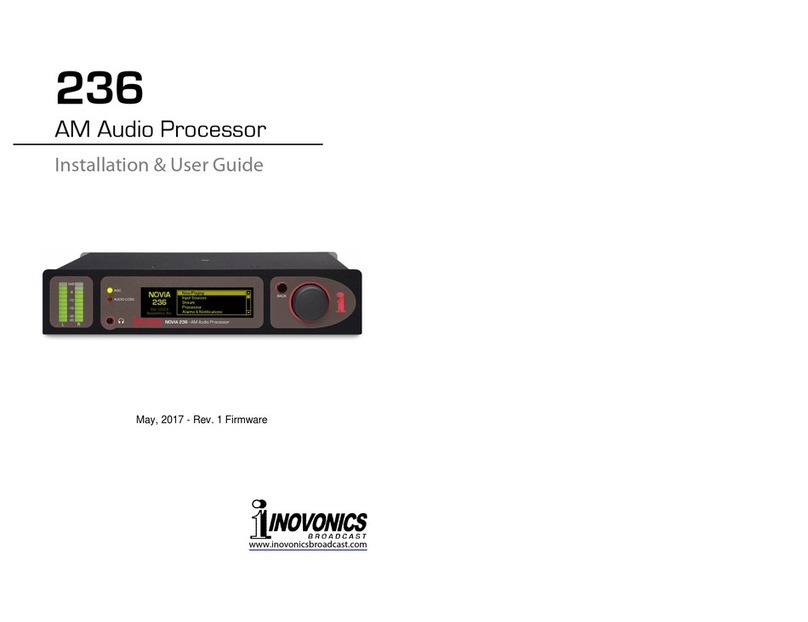
www.SteamPoweredRadio.Com
- -
---'
-
=-
---
...
the harmonics. This leads
to
an
appreciable
and
consistent
imbalance
between
positive
and
negative peaks,
and
can
be
used
to modulation
advantage.
The
230
Phase-Follower
circuit
monitors
mean
peak
energy balance
and
instantly
inverts
program
phase
to
maintain
maximum
positive
AM
trans-
mitter modulation.
The
prog
r
am
inversion
is
effected only
at
signal
zero-crossings, however, to reduce
audibility
of
the switching action.
Nevertheless,
an
instantaneous second harmonic product
is
generated
each
time the phase
is
inverted,
and
may
be
distracting
with
some
types
of
pr
ogram
material.
Sensitivity
of
t
he
Phase
-Follower
circuit
is
adjustable so
that
a c
omprom
ise
between
advantage
and
annoyance can
usually
be
reached.
AM
Stereo
As
of
this
writing,
the subject
of
ste
reophonic
AM
broadcasting
is
receiving a
good
deal
of
attention.
Although
no
standard has
been
adopted, the
most
promising system
utilizes
a combination
of
carrier
amplitude and phase modulation.
In
this
system, a
L+R
audio signal
amplitude modulates the
transmitter
in a conventional manner, assuring
monaural
compatibility.
The
L-R
audio signal phase-modulates
the
carri
e
r,
and
is
independently demodulated
and
matrixed
by
the
AM
stereo
receiver
to
yield
Left
and
Right information.
When
interconnected
for
FM
stereo operation, the
230
Phase-Follower
circuit
is
automatically disabled. Nonetheless,
when
two
230
1s
are
interconnected,
and
the Phase-Fo·llower in
one
unit
manually enabled,
the other Phase-Follower
circuit
will
be
slaved
to
the
first.
If
the
first
230
should process the
L+R
signal
which
amplitude-modulates
the
carrier,
and
the second unit the phase-modulating
L-R
information, the
result
will
be
a
fully
modulated
AM
carrier
with the stereo matrix
phase properly maintained.
_Frequency-Selective Limiter
Standard
FM
broadcasts
utilize
a
75µ
s pre-emphasis time constant
for
signal-to-noise
improvement;
. Dolby-encoded broadcasts a
25µs
charact-
eristic.
As
a
result
of
this
signal pre-emphasis, the
amount
of
trans-
mitter input drive to achieve
100%
modulation
is
much
less
at
high than
at
low
frequencies.
An
effective
FM
limiter
mu
st
therefore
effect
greater reduction
of
high frequency
program
prak
s.
The
Inovonics
230
incorporates a separate
Pea
k Limit
er
to control the
energy
of
high frequency
program
peaks independently
of
the
normal
broadband
limiting action.
The
high frequency
limiter
can
be
switched
between
75~s
and
25µs
limiting
characteristics
.
-8-



